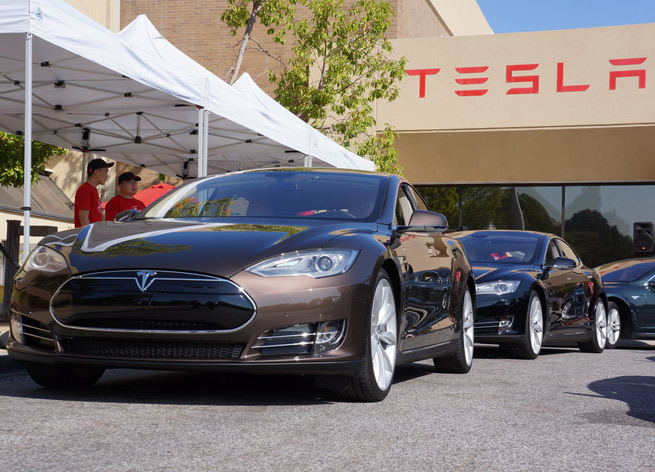40 percent of global capacity
If the company hits those numbers, and if the 85-kWh battery proves as popular overseas as it has in the U.S., by next year the Model S alone will soak up almost 40 percent of global cylindrical battery production.
But the planned short term increases in the production rate for the Model S in 2014 are hardly the end of the story.
By the beginning of 2015 Tesla will have started production of the Model X, which could add another 20,000 cars to the total–or more.
Credible estimates already exist that point to a need for double or triple the global battery production over the next few years, solely to satisfy Tesla’s growing appetite for lithium-ion cells.
The reasoning behind this is obvious, once you make some simple assumptions about the potential market for the Model S and Model X.
Numbers don’t lie
Elon Musk has repeatedly pointed out that the North American market represents about one-third of the global market for luxury cars. With Tesla selling around 20,000 cars a year in North America, global demand for the Model S could be closer to 60,000 per year.
Factor in the Model X, starting in 2015, and you can quickly reach a scenario in which Tesla sells up to 100,000 cars a year by 2017.
That could require something like 640 million cells per year, meaning that Tesla would need to engineer almost a doubling of global cell-fabrication capacity over the next few years.
That’s not something that can be done in six months. It took Nissan three years to build its latest lithium-ion cell production plant in Smyrna, Tennessee; funds were committed in June 2009, and the plant went into production late in 2012.
Even if the final sales figures for the Model S and Model X come in substantially below these projections, Tesla needs to get started sooner rather than later.
Third-generation Tesla
Thus far, the Model S has been a remarkable success, and is outselling its large luxury rivals.
But regardless of final sales totals for the Model S and Model X, Tesla is moving forward with plans to build an electric car that will compete head to head with the BMW 3 Series and Mercedes-Benz C Class.
What’s known as the Generation III vehicle (and perhaps to be called the Model E) is currently slated to enter production in late 2016–just three years from now.
It is expected to be a mid-sized sedan 20 percent smaller than the Model S, offering at least 200 miles of electric range, for a list price starting around $35,000.
Total global output for 165,000 cars
Assuming each car requires 4,000 cells, Tesla will need additional battery production capacity equal to the entire current global output of these cells for every 165,000 of these cars.
The company’s existing Fremont, California, factory is capable of producing 500,000 cars a year, Tesla is looking into building additional factories in Europe and Asia.
If the third-generation car reaches production of 100,000 a year or more, the batteries it requires will run well into the billions–dwarfing the capacity of the entire current battery industry.
Suppliers or in-house production?
This is why Elon Musk has already discussed the need to build “truly gargantuan” battery factories to supply Tesla’s future needs.
It’s not yet clear whether Tesla will rely on the existing industry to do so, or choose to take the reins itself–perhaps by buying an existing supplier.
Already, it’s clear that Tesla has had an outsized impact on the global battery business. With 2013 only two-thirds over, Tesla Motors Corporation is now applying market forces that have started to pull the biggest battery makers on the planet into its orbit.
As Tesla begins to gear up for the mass production of its next-generation vehicle, it must already plan for a massive expansion of the battery industry independent of any consumer-electronics needs.
If Tesla’s numbers hold, that expansion could double or even triple global cell production in only three to five years.
Henry Ford would likely respect the magnitude of that task.
This story originally appeared on GreenCarReports.com.
This story originally appeared on Green Car Reports. Copyright 2013


